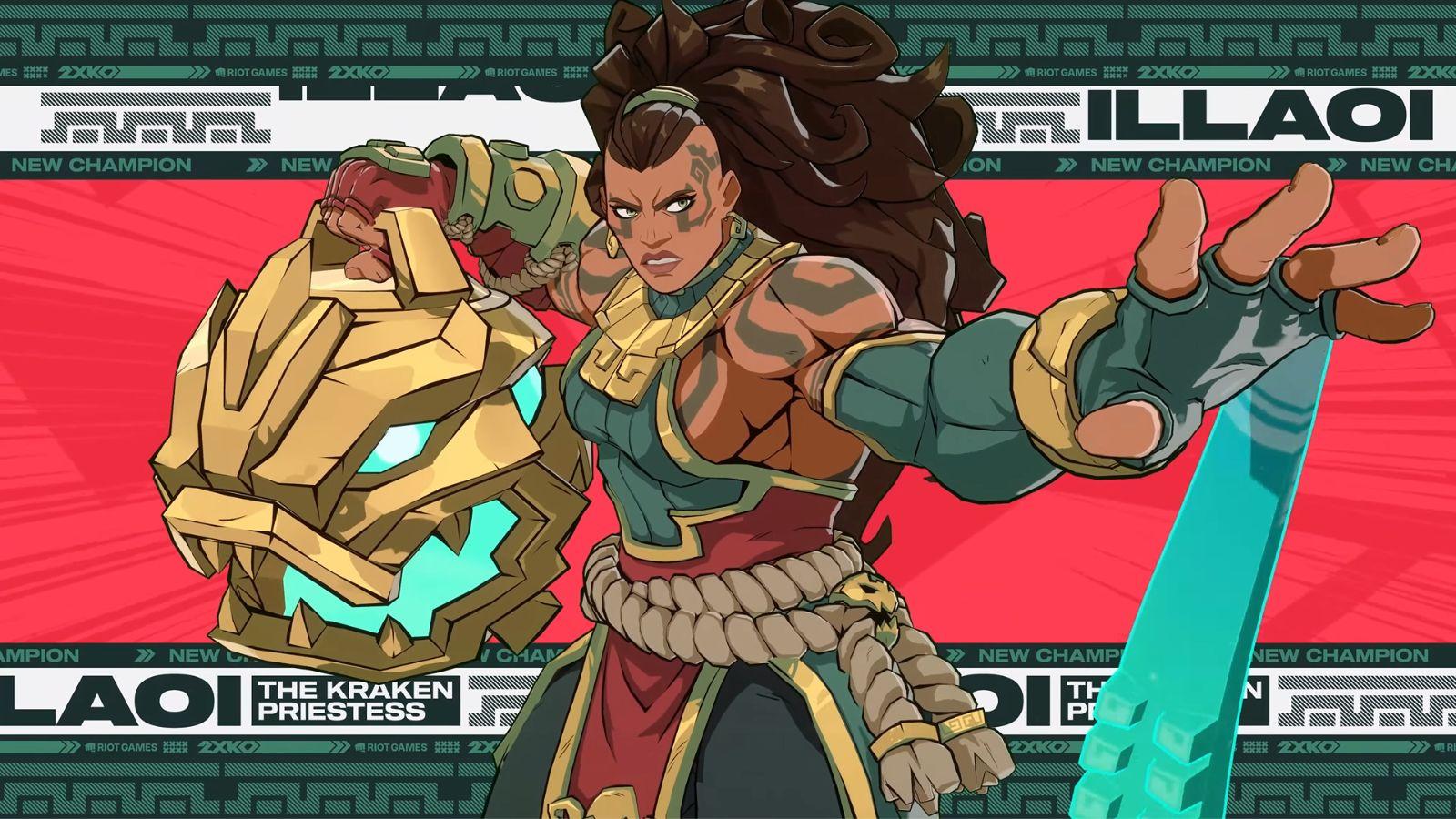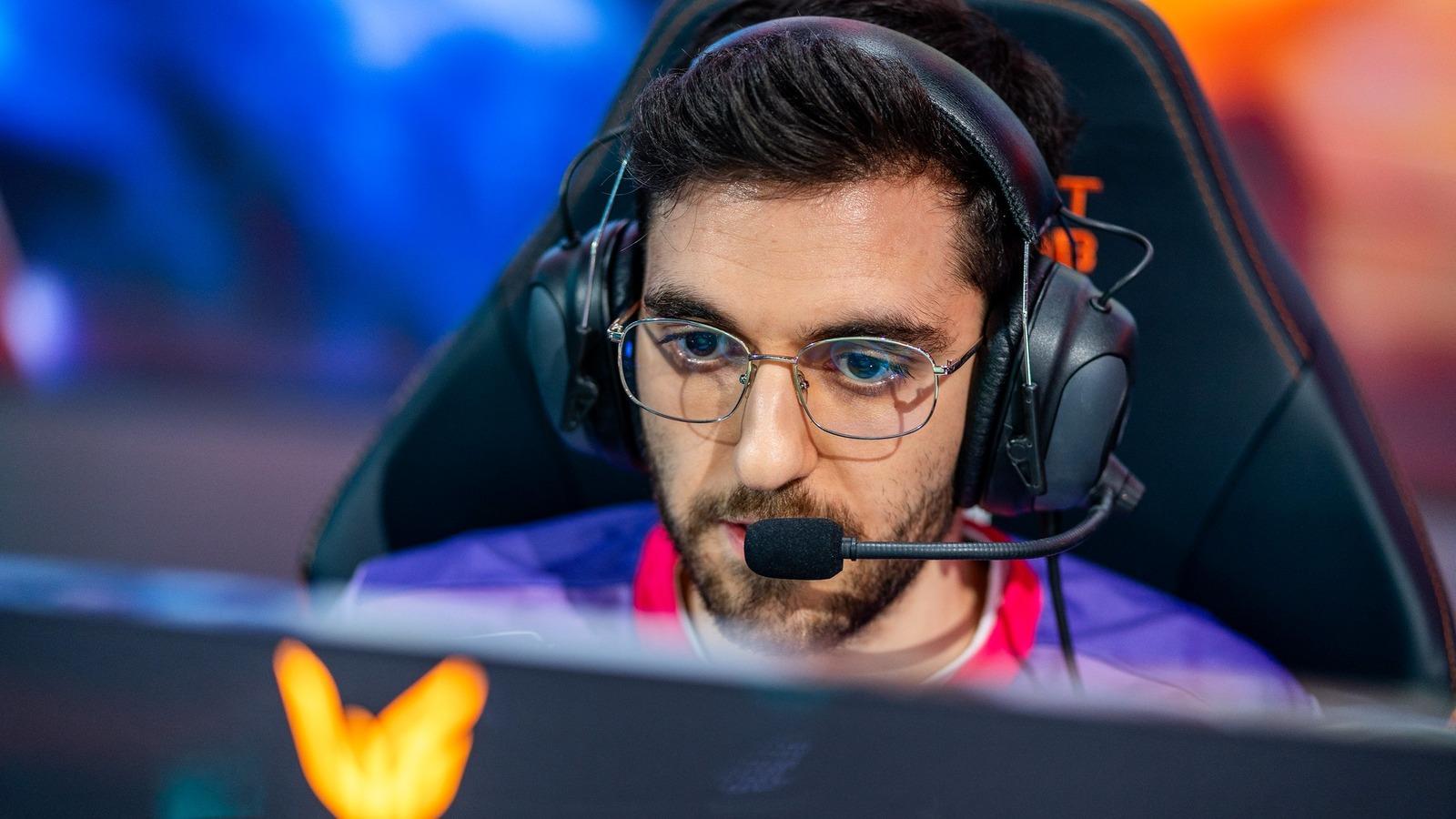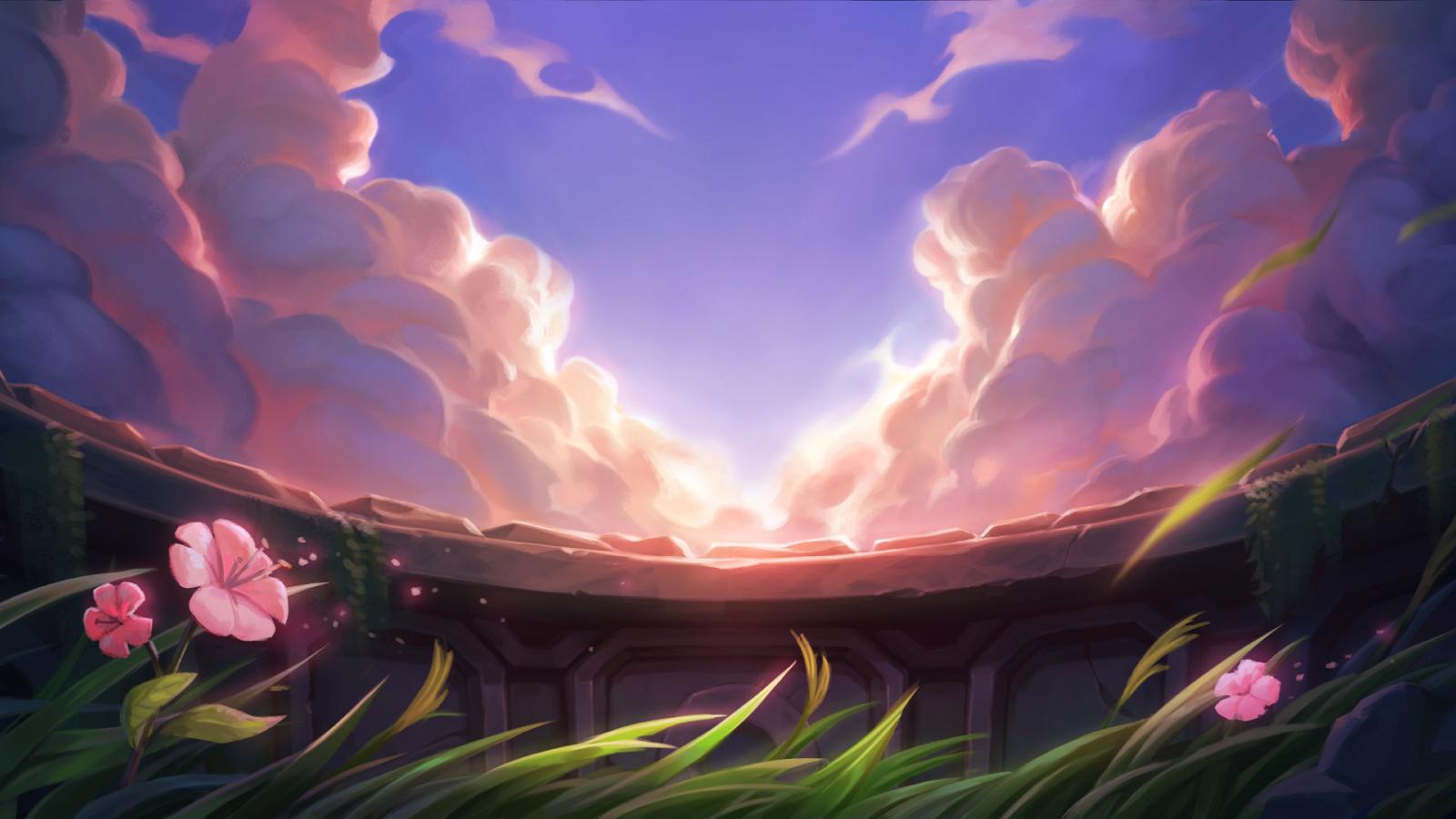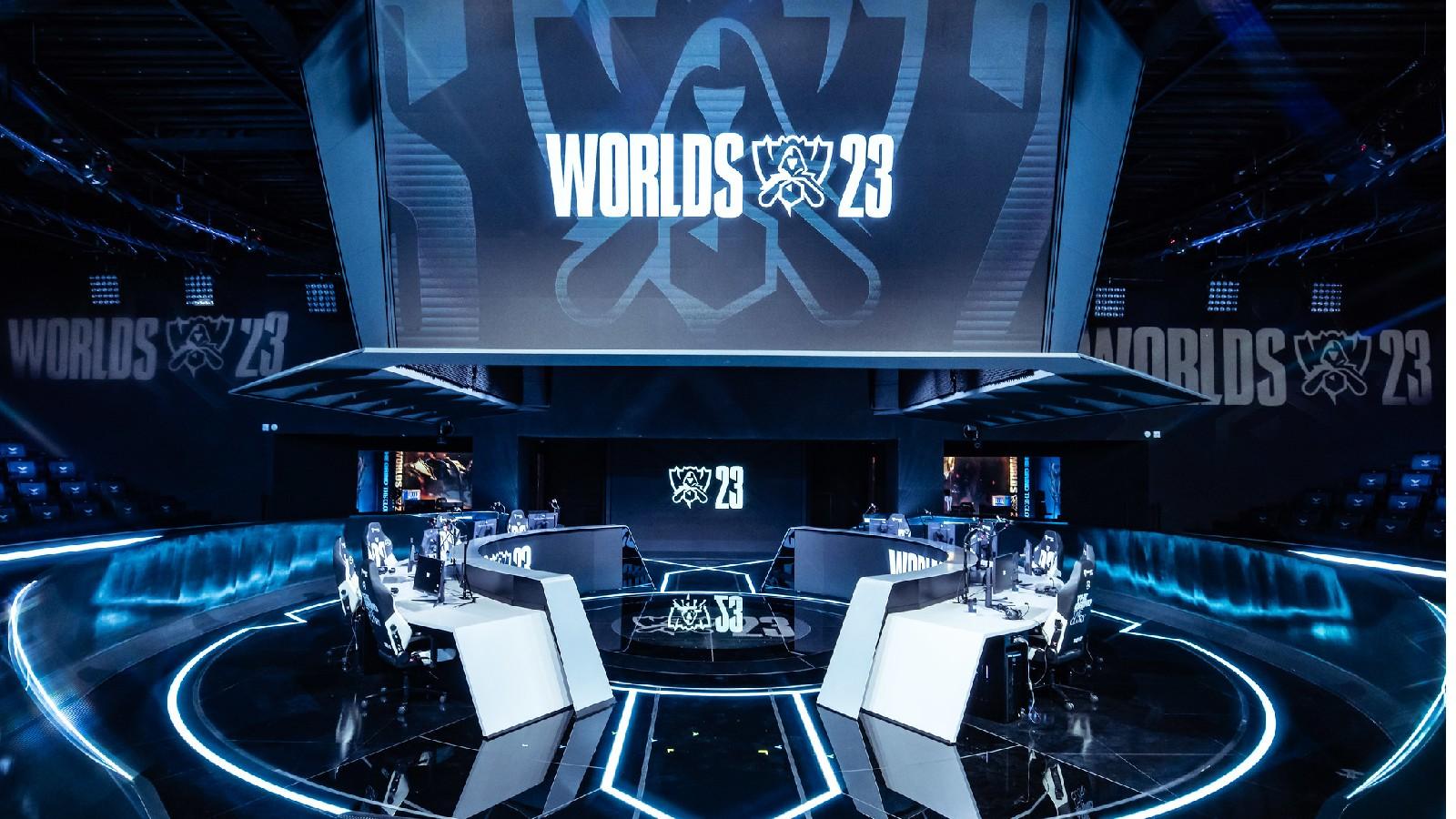Kelsey Moser: How to Pick’Em for LoL Worlds 2019
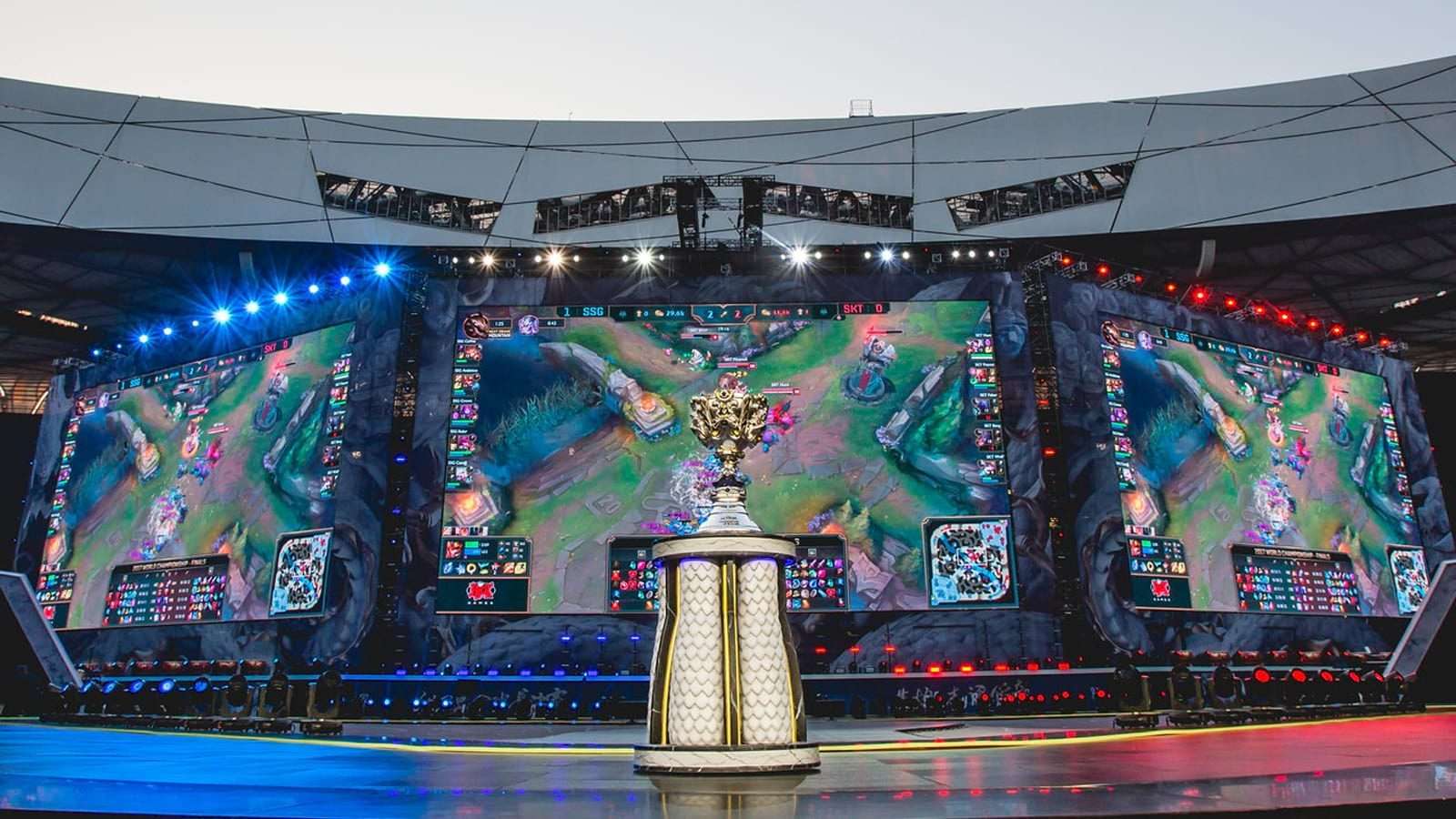 Riot Games
Riot GamesTop twenty lists and power rankings dominate the formula for pre-Worlds content. Just as I departed slightly from the standard formula in my player ranking, I won’t submit a straight team ranking either.
[ad name=”article1″]
I’d rather emphasize the key to understanding World Championship group play. Stylistic matchups matter more than a team being “better overall.”
That is to say, I may argue a team like SKT T1 is better overall in terms of fundamentals, mid and late game macro, and an understanding of their players’ strengths and weaknesses, but sometimes shoving a sledge hammer at the bottom lane turret just works. It really depends on the team.
As such, I’d rather just advance to a time honored League of Legends classic: The Pick’Ems. Sometimes the group draw can deny the most interesting matchups because one team knows how to attack the best team in the world stylistically. You just have to beat them twice.
[ad name=”article2″]
Group A: Domestic Darlings
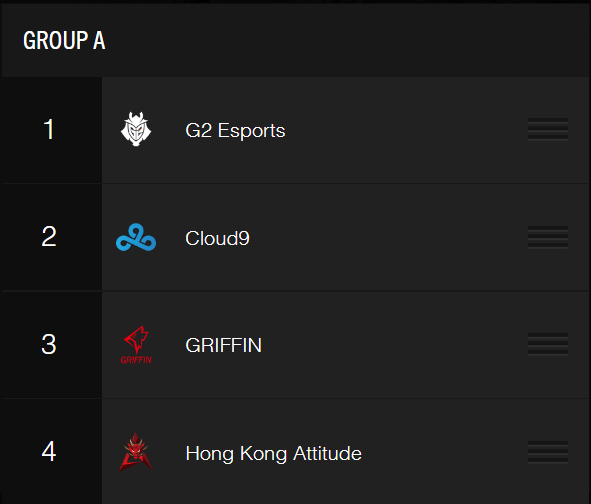
Obviously one of the most interesting groups, the most contention over my choices will likely come from placing Cloud9 over Griffin. That’s why most of this analysis focuses on how Cloud9 can best Griffin, not once, but twice.
As I’ve already discussed in my Griffin analysis, Griffin can lose to teams with a stronger top-jungle combination. This comes from multiple factors:
- Opponents are usually better at playing around either top or bot than Griffin
- Griffin’s general mid-to-late game macro suffers, but they can get pressure through side if their top laner plays a champion that can scale freely
I’d also add that Griffin have historically had a tendency to shoot themselves in the foot in draft by not giving themselves a mid-to-late game win condition, and with less-than-stellar early game plans, that proves problematic. That particular factor is more likely to change with the abrupt removal of their Head Coach than the others.
[ad name=”article3″]
Where I give Cloud9 an advantage is a use of top lane priority to bot lane skirmish, which showed up in the team’s Grand Final against Team Liquid. When Eric “Licorice” Ritchie gets a top lane advantage he uses it well, and though this year from him hasn’t been as impressive as the last, Griffin’s top laners don’t play well for lane, so as long as Cloud9 draft to this advantage, they are unlikely to be contested on it based upon Griffin’s tendencies in the early game.
- Read more: How to play the LoL Worlds 2019 Pick’em
You can also argue that Griffin’s bottom lane of Park “Viper” Dohyeon and Son “Lehends” Siwoo can create a greater advantage around bottom lane considering the recent under-performances of Zachary “Sneaky” Scuderi, but even in the context of LCK, Griffin struggled to both draft for and play for any kind of bot side advantages. So even if you can argue that Griffin can have roster-based advantages, jungler Lee “Tarzan” Seungyong is less likely to press them than Dennis “Svenskeren” Johnsen. On a completely stylistic level, the ball should be in Cloud9’s court early on.
Of course, traditionally speaking, North American teams have had significant disadvantages to Korean teams in macro. But one of the biggest observable flaws in Griffin is their failure to play for the mid wave on resets when contesting objectives. Tarzan consistently rushes to dragon or another objective, and opposing bot and jungle trios can zone his team off of a fight. As a result, Griffin even struggle to use their superior team fighting. Cloud9, even against Team Liquid, showed a better sense of mid wave control and using it to transition to relevant objectives.
[ad name=”article4″]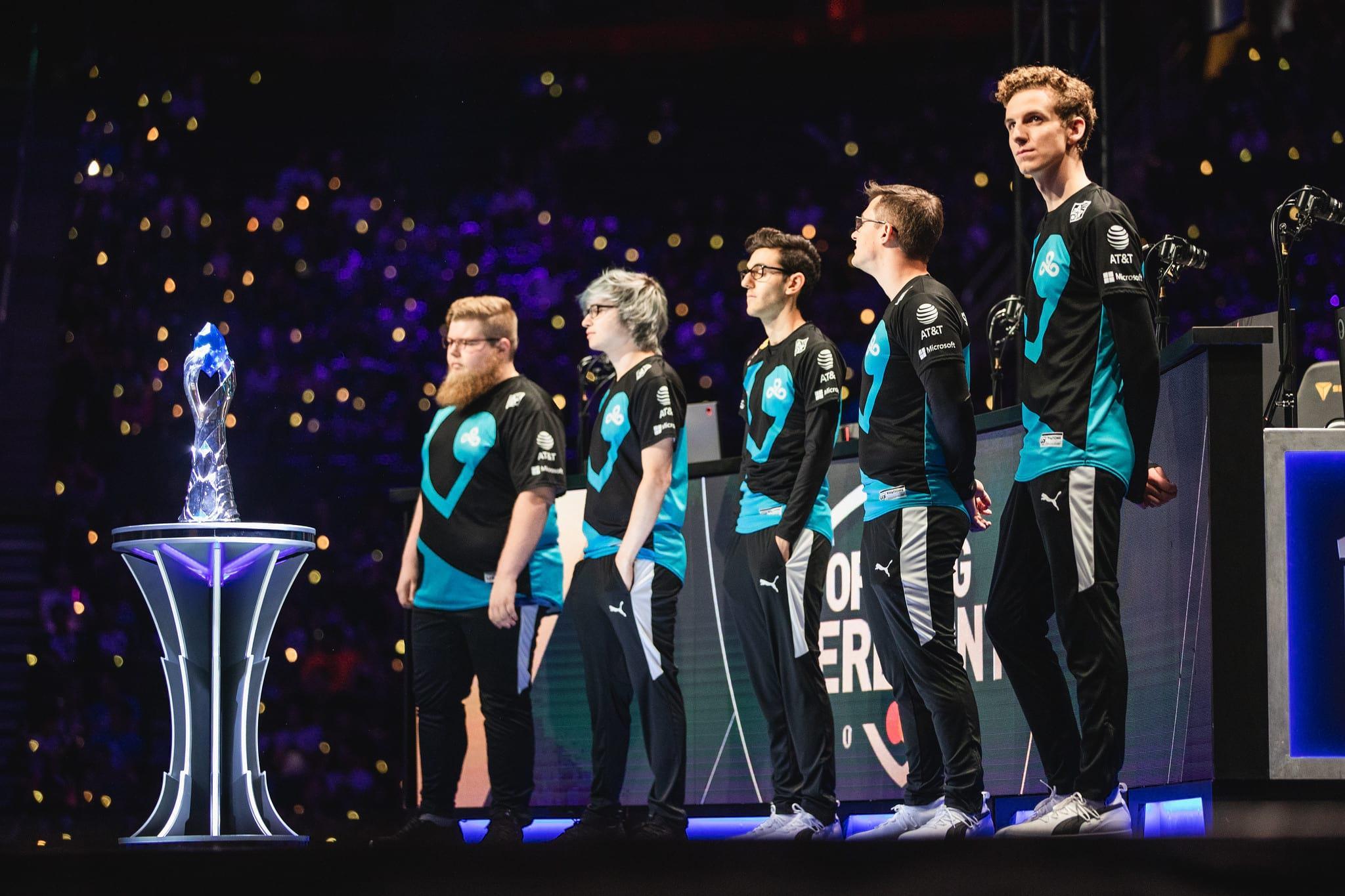
Arguably, Cloud9’s sense for the 1-3-1 is above average in the context of LCS. Griffin then barely have the window of getting pressure in side lane, generally a draft-based advantage, and if Cloud9 use Licorice well, they can easily shut that down.
The only remaining points to argue are how G2 Esports and Hong Kong Attitude fit into the equation. G2 Esports have really interesting flaws in their early game. As a team, they generally prefer to over-extend playing for wave crashes. If they can get their minion waves to crash before they reset, even if they die, that means the wave will bounce back to them when they’re coming back out of their base. As a result, if they can play for a skirmish in this window and win, they can get that victory on top of minimizing creep loss.
- Read more: Kelsey Moser: The Definition of making it
Where this backfires is in exposing their laners and jungler (at times, before 10 minutes, Marcin “Jankos” Jankowski will also delay his resets to help his laners ensure wave crashes) to ganks or catches in making risky plays to facilitate the wave reset. As a result, playing specifically to coordinate with a jungler to freeze the wave and catch out G2 Esports’ bottom lane can yield good snowball advantages while also restricting Mihael “Mikyx” Mehle’s agency on the map. That isn’t something I see any Group A teams play for consistently.
[ad name=”article5″]
This quirk of G2’s was also a factor in why Fnatic’s globals worked so effectively against Europe’s first place team. The forced skirmish on reset could be caught out by a global used by Fnatic to match. The Cloud9 and Griffin rosters have both shown good execution of globals in their teams’ recent histories, so it shouldn’t be expected that G2 go undefeated in their group.
But mid game advantages show through more for G2 Esports. Unlike in the early game, G2 Esports have some of the best reset timings in the mid and late game to maintain vision for objective spawns. Actually, probably the best way to beat G2 would be to play against vision. Since G2 often set up wards to bait teams away from the objective they want, moving on G2’s vision timers to place wards around Baron or dragon before G2 transition to those objectives can yield catches and team fight or skirmish victories.
- Read more: How to watch LoL Worlds 2019
But since G2 usually time their vision-related resets so early, the best way to do that is to deny gold to prevent G2 from getting good resets for item buys. In order for that to even be a viable strategy, Cloud9 or Griffin would have to demonstrate an ability to get an advantage on G2 into mid game, which none of their footage this summer suggests that they will.
Hong Kong Attitude haven’t demonstrated the ability to counter any of the other teams’ flaws, and their biggest strength is Baron vision control. They can potentially leverage that against a team like Cloud9 that will overplay for mid wave, but it seems likely they drop out of the group without winning a game.
Group B: Jungle-support dynamics
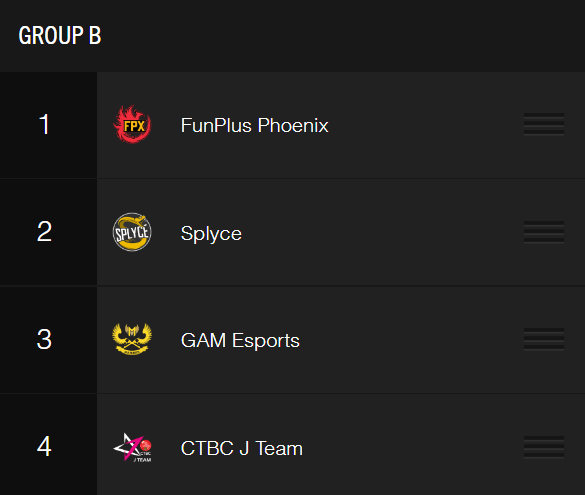
While, on paper, this group doesn’t look too inspiring, it has a lot of potential for “upsets,” given Splyce’s shaky hold on fundamentals and Fun Plus Phoenix’s reliance on roams from Kim “Doinb” Taesang. The obvious mammoth in this group is China’s first seed, but even Royal Never Give Up demonstrated an understanding of FPX’s weaknesses despite not capitalizing upon them properly.
FPX functions on Gao “Tian” Tianliang and Liu “Crisp” Qingsong going to mid lane to execute a three-man so that Doinb can get the first reset mid of the game. Doinb doesn’t have the best technical laning ability, so a better laning mid laner can force him out if jungle and support are willing to match the 3v3.
Both J Team and Splyce are up for the challenge. Chu “FoFo” Chunlan and Marek “Humanoid” Brázda are two of the best mid laners to make a World Championship debut this year. FoFo’s Jayce is up for a skirmish challenge, but J Team don’t naturally like to focus 3v3 energy mid that early. Splyce have done it before, especially to pressure an Azir advantage, but they’re less likely to go for it than FPX, especially since Andrei “Xerxe” Dragomir doesn’t typically lead plays for the team.
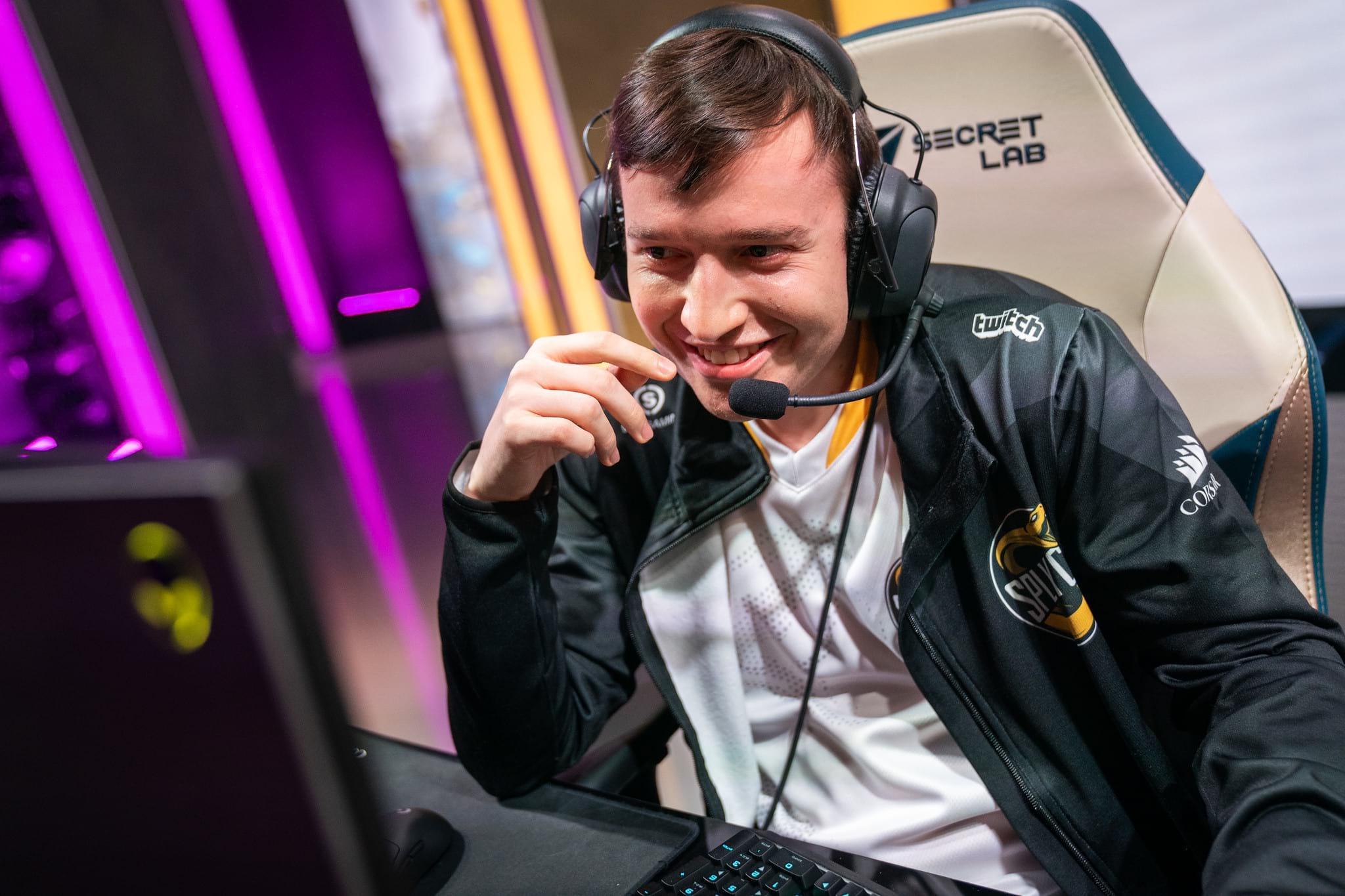
A lot of situations where support Tore “Norskeren” Hoel Eilertsen looks like he’s getting caught out in a poorly timed bait where Xerxe follows up late arise from Splyce being overly reliant on Norkseren’s playmaking. While Splyce might initiate a 3v3 mid where Xerxe goes bot first and rotates with Norskeren, FPX will always have an upper hand in a 2v2 since neither Doinb nor Tian hesitate to pull the trigger.
It’s also extremely interesting how compositionally similar both teams are. Lin “Lwx” Weixiang and Kasper “Kobbe” Kobberup are more team fight threats lead by their supports in lane. Kim “Gimgoon” Hansaem and Tamás “Vizicsacsi” Kiss are likely to take the blind pick in draft and play to absorb pressure.
Both teams also play for mid wave in the mid-to-late game by over-forcing for priority. It’s just that, with the way early game plays out, FPX are likely to come in with the advantage, and if neither team understands how to play out the map differently, FPX will retain it.
GAM Esports are the obvious wildcard of the group. With a lot of individual player strength for a team hailing from Vietnam, they can definitely pull upsets. Đỗ “Levi” Duy Khánh and Phạm “Zeros” Minh Lộc will bring out a top-jungle 2v2 the rest of the group won’t feel prepared to contest. GAM has one of the most interesting dynamics in a group full of already unique dynamics, and if they get a lead, their objective control fundamentals are enough to close the match against Splyce or FPX. I see them as a team more likely to take one-off matches than J Team, and therefore rated them higher.
Group C: RNG’s dream can be a nightmare
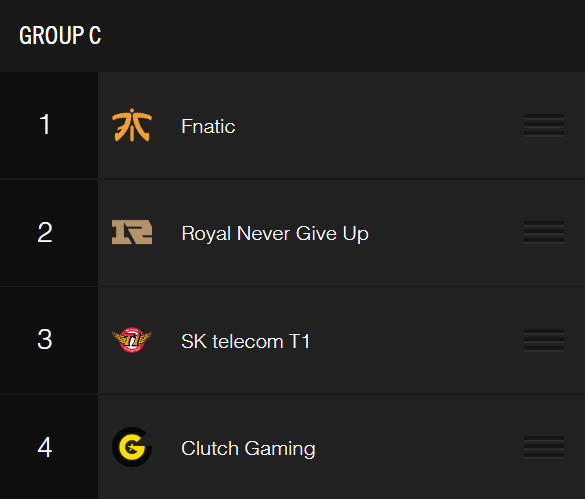
I covered my thoughts on this group in a full article already, so a lot of this will mainly come down to whether or not Clutch Gaming can play spoiler.
Clutch don’t have a good matchup against Fnatic, and Royal Never Give Up spent most of the LPL countering 10 minute Rift Herald plays by forcing heavily to take bottom lane turret before it even spawns. The advantage Clutch had domestically and in the context of Play-Ins is that although they didn’t necessarily have the best mid-jungle 2v2, they knew how to play for it better than their opponents, but that won’t stand up well here.
Fnatic play for heavy support-to-mid roams that will be unopposed since Clutch tend to draft for a scaling bottom lane, SKT T1’s mid-jungle is arguably their crown jewel, and Li “xiaohu” Yuanhao avoids mid-jungle force opportunities by effectively not being there after dropping a mid wave to dive bottom.
Where Clutch can get an advantage against RNG at least is in RNG’s complete and utter abandonment of top lane. Against Fnatic, SKT T1, and Clutch, RNG’s top side play is the Chinese team’s biggest opening. As a result, though I’d argue RNG have good matchups into what each team wants to do fundamentally, they aren’t clean enough to avoid dropping multiple games.
Every team except RNG in Group C would rather play to the top side of the map. I would argue that Xie “Langx” Zhenying is actually the second best top laner coming to Worlds from LPL over GimGoon, but RNG as a team would rather he have to back repeatedly or die for the wave and just double down on trading for bottom.
If Clutch, Fnatic, or SKT T1 pinch the support pool and force Shi “Ming” Senming to blind his pick so the bottom lane matchup isn’t as potent, they can limit what they lose and force on top side. That’s why I see RNG dropping more matches than Fnatic, but less overall than SKT T1 and Clutch since neither team punishes top side enough to take more than one game. But if SKT T1 drop RNG down to the third slot, it’s a much better outcome for the rest of the tournament as a whole.
Group D: The hair-puller
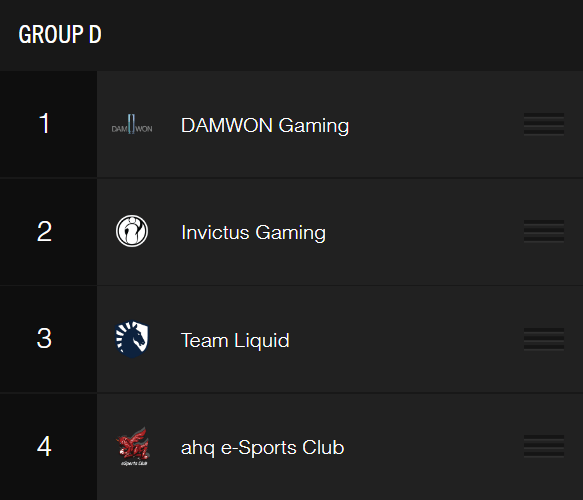
This is honestly the group that’s the most frustrating to analyze, largely due to Invictus Gaming’s form for most of the 2019 Summer Split. As a result, I feel the least confident about my conclusion.
Invictus Gaming saw a multitude of roster swaps throughout the split, beginning with Wang “Baolan” Liuyi’s benching into Song “Rookie” Euijin taking time off for a family emergency, and eventually Lu “Leyan” Jue taking over for Gao “Ning” Zhenning. But even when iG had all of their pieces together toward the end of the split in the playoffs best-of-five against LNG Esports, they looked like a complete disaster on almost every front, from draft, to individual play, to macro execution.
- Read more: Kelsey Moser: The SKT Ezreal infatuation
Even with all of these problems, I chose to rate Invictus Gaming in second because of their Regional Qualifier form. Though the games against Top Esports were far from polished, hints of an improved iG surfaced. Rookie and Baolan spent much of their matches working very closely in tandem with Leyan in a way that they hadn’t before with Ning. In previous iterations of the roster, iG played almost isolated 1v1s and 2v2s in their lanes, relying on Ning to make high risk plays to accelerate one lane over another.
Instead, Rookie — in a much better form than we’d seen him all split — used his priority to follow Leyan into his jungle and work together to set up plays and ganks. They also located and shut down the enemy jungler to prevent him from getting a good side trade.
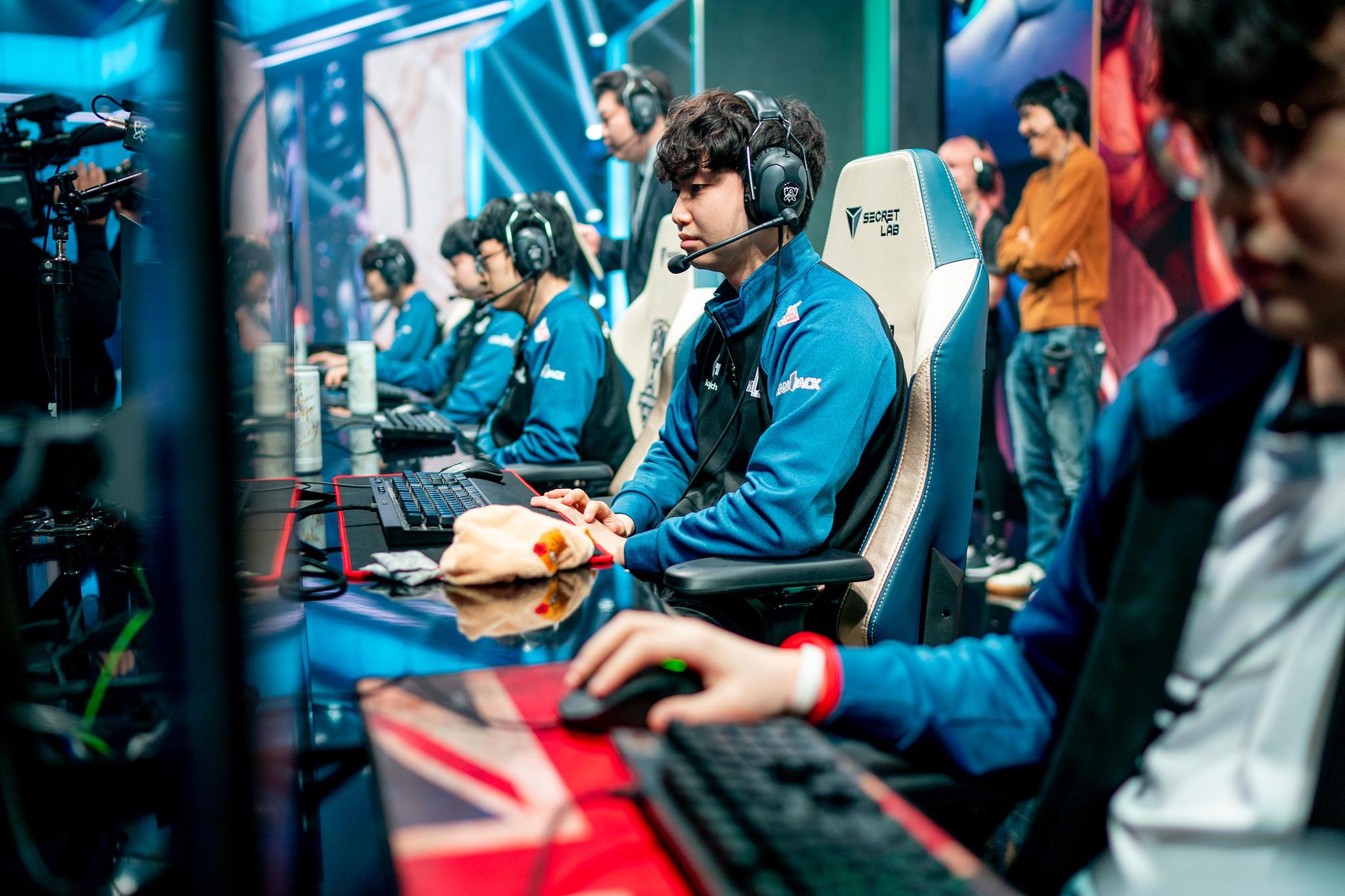
Considering Yu “JackeyLove” Wenbo also had a career split, the glimpse of iG we saw most recently could be the scariest iG we’ve ever seen in League of Legends. Add in the fact that a lot of what allowed Team Liquid to beat iG 3-1 at the Mid Season Invitational relied on Ning’s tendencies (specifically, lane ganks and playing for Rookie instead of Rookie playing for the jungler), and I could easily see the Group Stage tipping in favor of iG over the North American team again.
As for DAMWON, they have experienced the Play-In buff. Jang “Nuguri” Hagwon and Heo “ShowMaker” Su have aptly been dubbed the 2v8 duo. Team Liquid’s focus on bottom side won’t properly punish Nuguri’s kleptomancy lanes, and while ahq e-Sports might fancy themselves a budget FPX, they won’t have the skill to shut down Showmaker completely. That means that, the only team that might properly contest DAMWON’s scaling solo lane win condition is iG.
While I think iG can get into form enough to knock down a slow-ramping Team Liquid, DAMWON will pose the larger threat of clean execution in the face of a ticking clock. Team Liquid aren’t expected to start the tournament strong since Jake “Xmithie” Puchero has historically needed time to adapt to jungle metas on stage, so iG’s new approach combined with TL’s slow ramp up make it seem like Yiliang “Doublelift” Peng will spend yet another year outside the bracket stage looking in.
